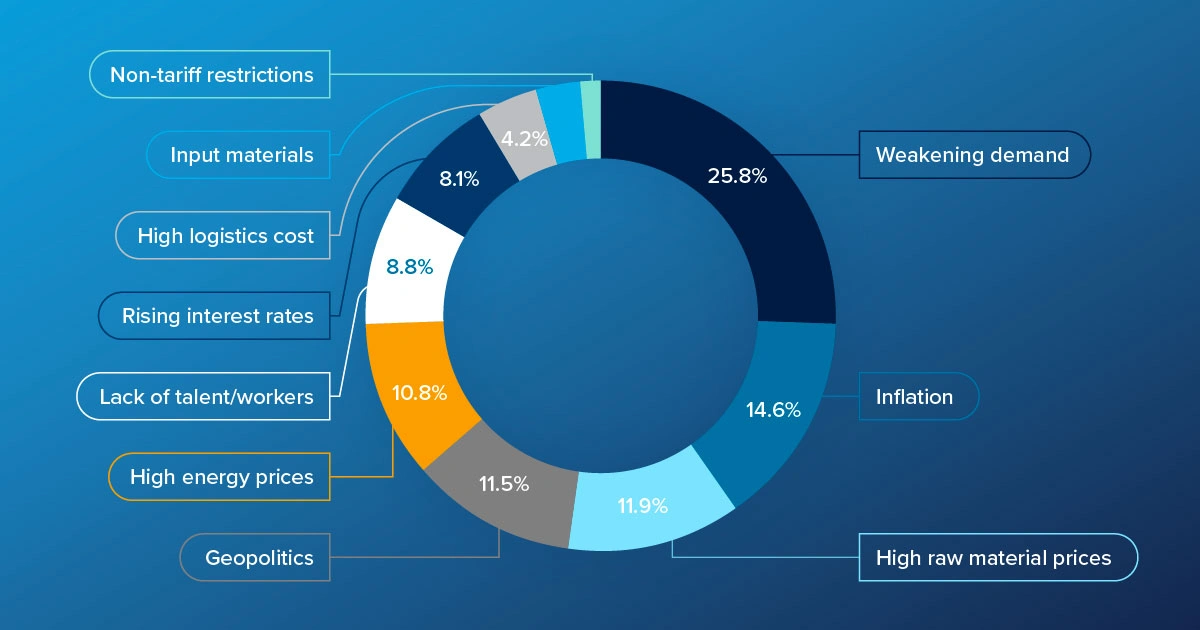
Fashion manufacturing industry trends in 2024: opportunities for better margins
Fashion has always been one of the most innovative and dynamic industries, and 2024 is no different. Consumer shifts, global macroeconomics, sustainability, diversification of channel mix and generative AI are all trends that are reshaping and will continue to reshape the entire fashion system.
Source: Textile World
Talking about everything in one blog post is impossible, so let's narrow the discussion to a few trends that could jeopardize margins for companies in the fashion industry.
Nearshoring
Moving manufacturing operations offshore to a distant location has been reversed in recent years, and this trend is continuing in 2024.
The main reasons for nearshoring are geopolitical instability, the need to build a more resilient supply chain and the urgency to improve lead time. Additionally, the demand for sustainability is also pushing for more nearshoring. Nearshoring can be an opportunity to meet the demand for more sustainable operations, involving more environmentally friendly suppliers and shortening shipping distances creating a smaller carbon footprint.
However, even though nearshoring reduces some costs, such as transportation, the overall total cost of ownership (TCO) is higher due to several components, including labor costs and limited infrastructures. Clearly, this increase in costs has a negative impact on margins. And the pressure on margins has been worsened by inflation, exacerbating the cost of raw materials, components and energy in the last few years.
Consumers shift
If the pressure on margins from the cost side of the profit and loss is increasing, then there are also concerns from a revenue standpoint.
Another point related to our discussion on margins is the shift in consumer behavior. Economic turbulence has impacted the purchasing power of several consumer segments and consumers have reacted by trading down, looking for more promotions and buying less.
In fashion, the "no luxury" segment, is not immune to this trend with some top brands facing severe decreases in sales. The majority of consumers, primarily the younger generations, are shifting at least a portion of their shopping behavior towards less expensive brands and retailers and are paying close attention to promotions. Moreover, the demand for resale and off-price will continue to increase.
Go the extra mile
So, knowing that the margins for fashion companies are besieged from both a cost and revenue perspective – what can fashion manufacturing companies do to overcome these challenges? To answer this question, you need to reinforce your planning capabilities in 3 different areas.
 |
Enhance simulation and what-if skills and capabilities. The planning exercise is more complex than ever. The number of sales channels and segments of consumers, bundled with geopolitical instability and new consumer trends, have exponentially complicated the planning exercise. Factoring all financial risks and opportunities requires advanced analytics, predictive and scenario management capabilities, and collaborative functionalities to identify the right strategies in the short and medium term. |
 |
Master price planning and optimization. Governing prices has always been a delicate business in fashion, where multiple price lists have to be correctly set for different markets, channels and SKUs. Now, due to the more complex segmentation of consumers and the increased number and interrelation of sales channels, the variables to control and define prices can be overwhelming especially without having the right capabilities in place. Moreover, because discounts and promotions have become more common in the market and are based on more variable and sophisticated mechanisms, the overall definition of the most profitable pricing structures is really hard to achieve. As a result, there’s an additional layer of complexity so adopting the right tools is vital to govern pricing. |
 |
Embrace market intelligence capabilities. Gather the latest, up-to-date information about prices, innovations, assortments and promotions to understand how markets are evolving, how competitors are behaving and determining which are the main opportunities and threats is a must. Being able to crawl all this information from the web, organizing it into actionable insights and utilizing it in real-time to plan and optimize is the key to exploiting any opportunities to improve your margins and stay ahead of the competition. |
Stay tuned for our upcoming blog posts, where we will delve deeper into the 3 key capabilities discussed here and explore other critical aspects of fashion industry success.


